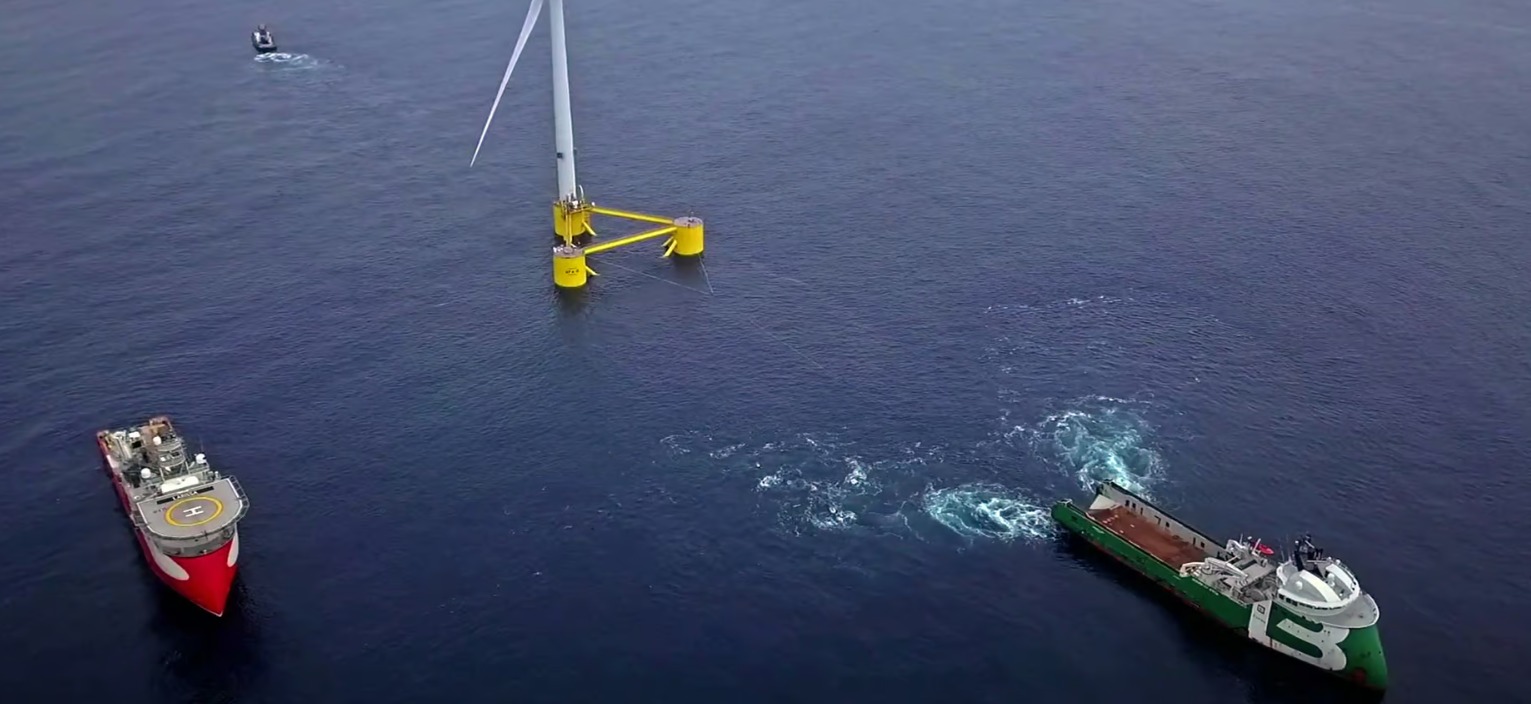World News09.09.2024
Better than expected: World's first semi-submersible floating wind farm

QAZAQ GREEN. The WindFloat Atlantic project – the world's first semi-submersible floating offshore wind farm, located off the coast of Portugal with only three turbines – has exceeded expectations over the last four years of operation, generating a total of 320 GWh of electricity. That's enough to power about 25,000 homes each year, New Atlas reports.
Fully connected to the grid and commissioned in 2020, the wind farm is made up of three floating platforms with an 8.4-MW Vestas turbine on each. The semi-submerged platforms are anchored to the sea floor – 328 ft (100 m) below the surface – with chains to keep them from floating away and are connected to an electrical substation in Viana do Costelo, Portugal, via a 12.4-mile (20-km) cable.
In 2022, the project produced 78 GWh, while 2023 saw even better figures, making 80 GWh of electricity.
Vestas is known for making huge turbines with high power-generation capacities. The turbines used in the Windfloat Atlantic project have a diameter of 538 ft (164 m), with the blade tips whipping around as fast as 232 mph (373 km/h), kicking out a modest 66,000 volts DC. The nacelle alone weighs 375 tons (340 tonnes), making it the world's largest offshore wind turbine.
Semi-submersible floating wind farms offer the unique advantage of being able to be placed in waters that are too deep for traditional bottom-fixed turbines, which are only feasible for waters about 150-200 ft (50-60 m) deep. And as you get further from shore, winds tend to be stronger and more consistent, making the turbines more efficient at harnessing wind power than their land-based counterparts. Given the partially submerged, three-pronged nature of the platforms with active ballast systems, they are more stable in rougher seas, also upping their efficiency.
Between 2011 and 2016, the Windfloat Atlantic project put a 2-MW prototype out to sea where it generated electricity for five uninterrupted years, even having survived through extreme weather conditions like 69 mph (111 km/h) winds and 55-ft (17-m) waves unscathed, paving the way for its full-scale 25-MW installation.
In 2023, the Windfloat Atlantic survived a particularly bad storm with 86-mph (139-km/h) winds and 65-ft (20-m) waves, proving how robust the off-shore electricity-generating system is.
New additive strategy enhances efficiency of bifacial perovskite solar cells
India tests a totally-new source of energy
Kazakhstan and UAE reaffirm strategic energy partnership with 1 GW wind project
Solar becomes EU’s top power source for the first time ever
How decentralised renewables transform healthcare services in rural Zimbabwe
Chinese company to build solar and wind power plants in Kyrgyzstan
Seaturns raises €2.45 million to industrialize wave energy technology and accelerate global rollout
Trump signs executive order to end subsidies for wind and solar energy
Uzbekistan's solar and wind power plants generate 5 Billion kWh since beginning of the year
Green Corridor Alliance JV registered in Baku to promote green energy development in Central Asia and the South Caucasus
In the EU renewable energy supply grew by 3.4% in 2024
IRENA accepting renewable energy project proposals in Central Asia until August 15
Astana to host Electronica Expo Kazakhstan Electronics Exhibition
WB gives rundown of Azerbaijan's green energy grid volume prospects
US solar sets new records as renewables nearly match natural gas – EIA
‘Wings’ on poles: Bill Gates-backed breakthrough wind turbine facility breaks ground
Perovskite tandem solar cell achieves new efficiency record
Kazakhstan and China endorse draft SCO joint statement on sustainable energy development
Innovative research on organic solar cells for space applications
Kazakhstan and Uzbekistan drive green energy progress in Central Asia











